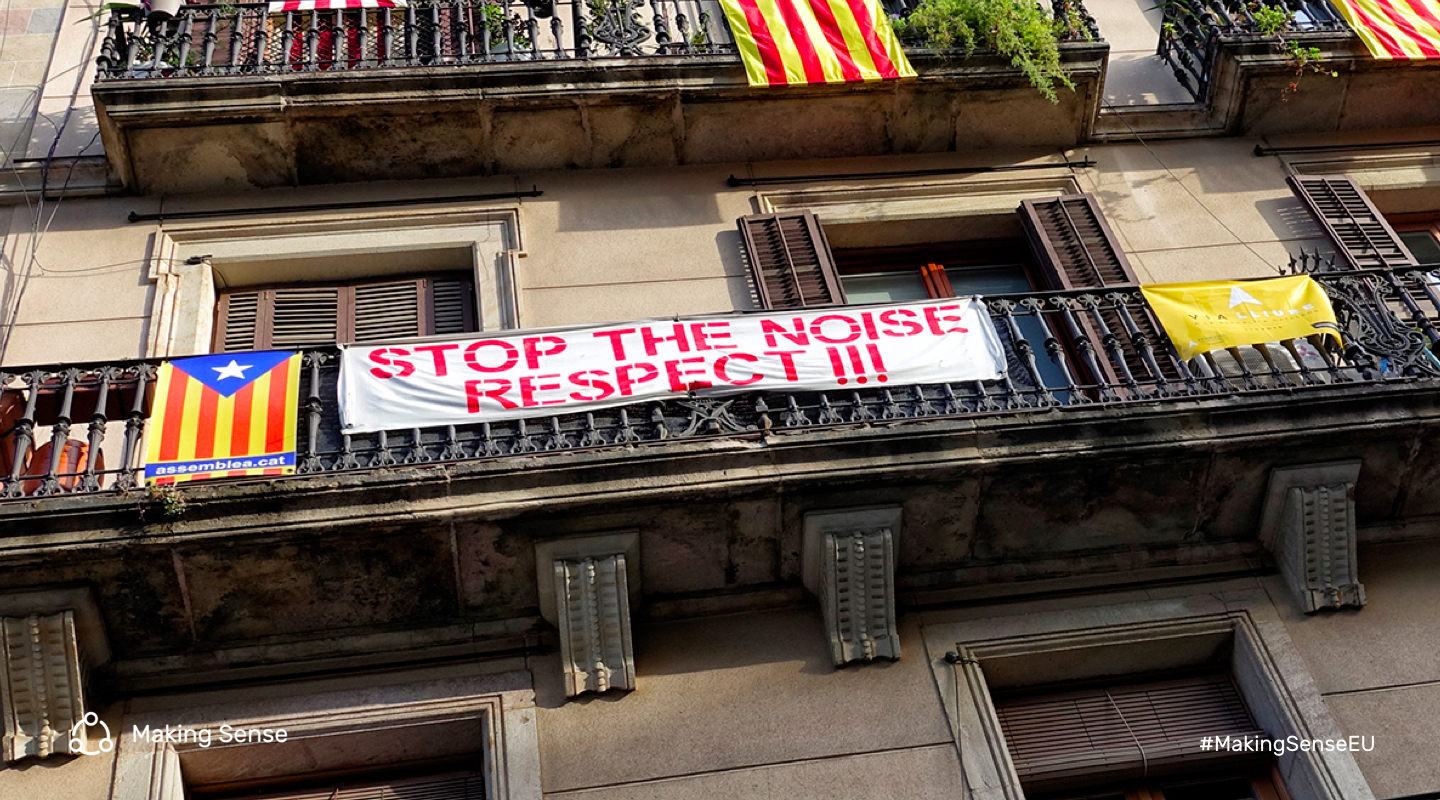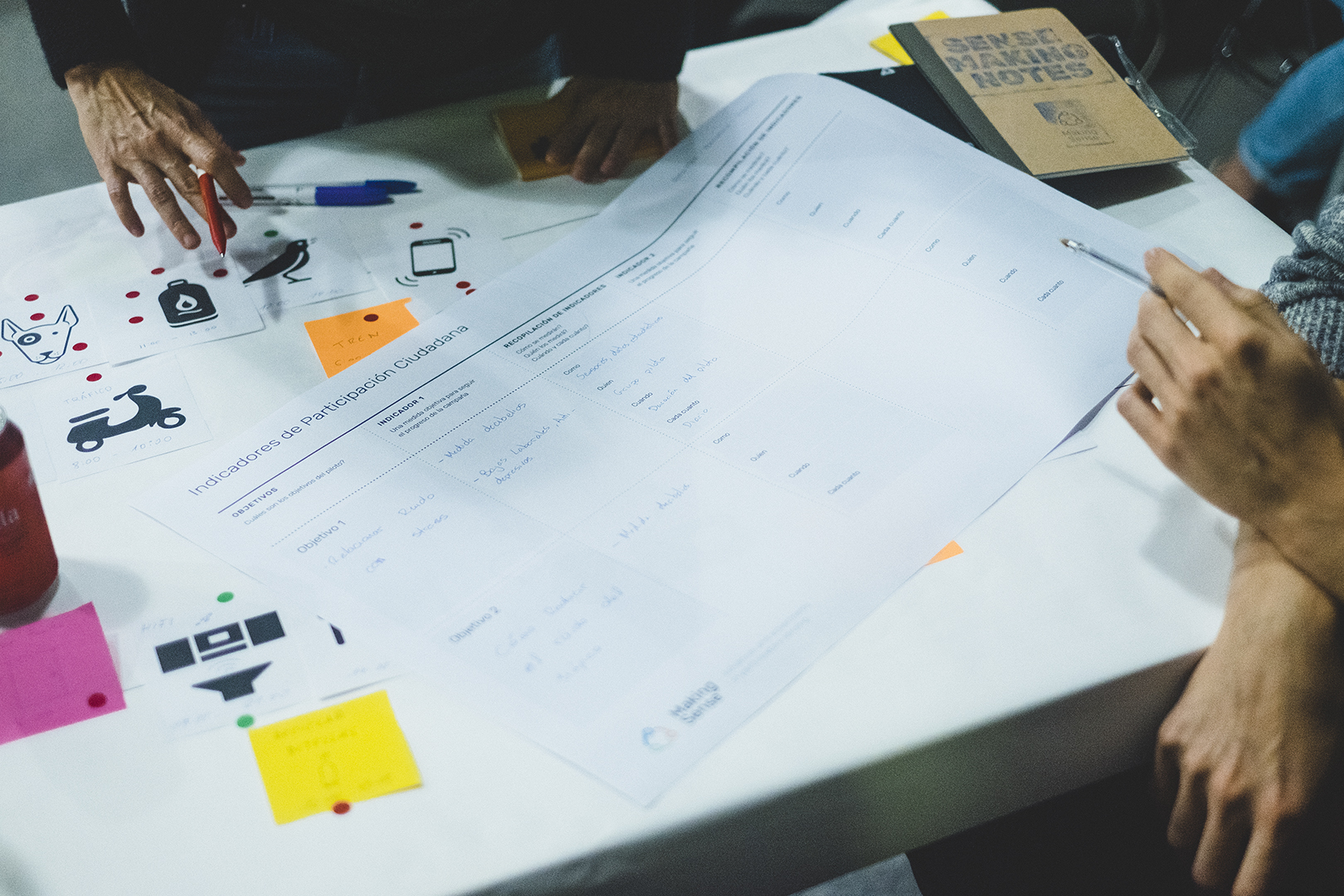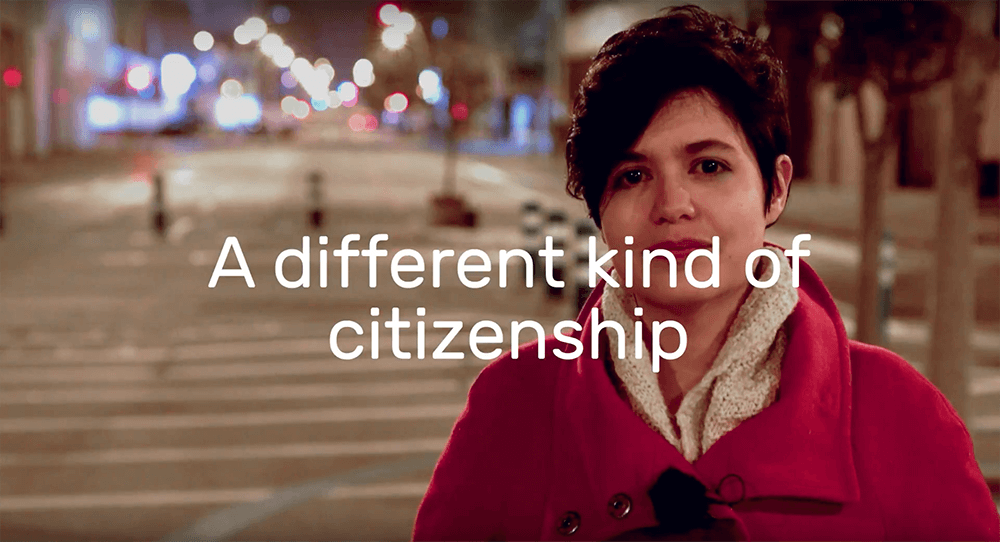Barcelona: a Community Level Indicators case study
17 December 2016
In the last insight blog post, we introduced the idea of Community Level Indicators and how we are using it as a way to complement participatory sensing in Making Sense.
To expand on this a bit further, we want to illustrate how insight into environmental issues through Community Level Indicators can empower citizen scientists and help them monitor the effects of activism and action.
Let’s discuss this through a quick case study: For the city of Barcelona, noise pollution is a real cause for concern. Traffic and tourism are cited as the main sources of the high levels of noise. Government studies say traffic is the primary cause of noise pollution and claim that 61% of citizens have to endure higher noise levels than what’s deemed healthy by legislation.
Whereas many citizens see people (specifically tourists) as a root cause; some residents take action against this type of noise pollution by hanging flags in their balconies with strong warning messages.

So how could Community Level Indicators support a Making Sense campaigns on noise pollution?
Community Level Indicators can be useful in five ways:
- Accountability: pairing sensor data with other types of data can often reveal root causes of environmental issues; recognizing and challenging our assumptions of cause and effect.
- Community assessment: they can become useful information to help communicate the main issues of the campaign to the community in a way that is relevant for them.
- Evaluation: monitoring these measurements from the beginning to end of a campaign can capture whether actions and interventions of the campaign have been successful.
- Policy change: discovering the root causes of environment issues and adding them to a detailed case study gives citizens the evidence they need to make a strong argument for change with their local policy or decision makers.
- Capability: Understanding the indicators that decision makers need in developing policies; looking for evidence and other types of data to create an equal footing and building a culture of empowerment around citizen sensing.
In the case of Barcelona, the community could collect Community Level Indicators that reflect their perception of where the noise is coming from and the impact it has on their community and in their city.
Some possible indicators could be:
- Number of people being treated for stress related issues in a noisier areas compared to quieter ones
- Volume of ear plugs purchased in certain areas
- Number of cars that drive on certain streets
- Number of warning flags hanging in balconies
These examples showcase a range of different ways to capture the causes and effects of noise. Some of this information could be available through existing research, the government has been active in studying the links between traffic and noise pollution, and the effects on citizen health.
Other indicators can be monitored by the participants, through exploring their daily lives and local communities, like asking local pharmacies how many ear plugs they have sold or asking the health service how many people are being treated for stress related issues.
Tracking this support information will help citizens find and share what are the real causes and effects of noise in Barcelona, and having this information alongside the sensor data will help them argue their case for change.




